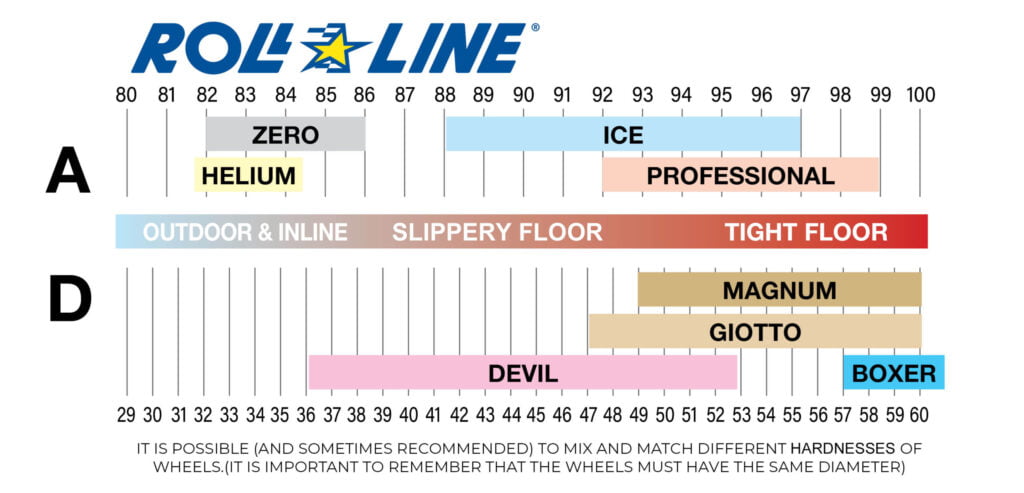
Decoding the Roll: Understanding "D Shore" Rated Roller Skate Wheels
Share
When you're browsing for roller skate wheels, you'll inevitably encounter numbers followed by a letter, like 78A, 92A, or sometimes, something like 88D. These ratings, known as the durometer, are crucial for understanding a wheel's hardness and how it will perform. While the "A" scale is the more common measurement you'll see, the "D" scale offers insights into harder wheels designed for specific skating styles.
Think of durometer as a measure of a material's resistance to indentation. (Imagine you have a marshmallow. If you poke it, your finger goes in pretty easily. It has a low durometer. It doesn't resist much. Now imagine you have a bowling ball. If you try to poke it, your finger won't go in at all. It has a high durometer. It really resists being indented.) A lower number indicates a softer wheel, while a higher number signifies a harder one. This hardness directly impacts several key aspects of your skating experience: grip, roll, and shock absorption.
The Familiar "A" Scale: Your Everyday Roller Skate Wheel
The "A" scale is the industry standard for most recreational, artistic, and jam skating wheels. It ranges from roughly 78A (very soft) to around 103A (very hard). Here's a general breakdown:
- 78A - 85A: Soft Wheels: These wheels offer maximum grip and excellent shock absorption, making them ideal for outdoor skating on rough surfaces, cruising, and beginners who need more stability. They tend to roll slower than harder wheels.
- 88A - 92A: Medium Wheels: A versatile range that balances grip and roll. These are popular for indoor rink skating, recreational use, and some types of artistic skating. They offer a good compromise between comfort and speed.
- 95A - 103A: Hard Wheels: Designed for speed and precision, these wheels are favored by aggressive inline skaters (though some very hard quad wheels exist), rhythm skaters, and those who prioritize roll over grip. They provide minimal shock absorption and are best suited for smooth indoor surfaces.
The "D" Zone: Handling Tougher Situations
The "D" scale is used for significantly harder materials than those typically measured on the "A" scale. Think of materials like hard plastics, nylon, and very rigid urethanes. On the durometer scale, the "D" range generally starts where the "A" scale leaves off (around 100A) and goes up to 100D.
So, what does a "D shore" rated roller skate wheel mean?
A roller skate wheel with a "D" rating is significantly harder than most "A" rated wheels you'll encounter. For example, a 55D rating on a roller skate wheel uses the Shore D hardness scale, which is typically used for harder materials. Roller skate wheels are most commonly measured using the Shore A scale, which is better suited for softer, more elastic materials like polyurethane used in most skate wheels.In summary, a 55D roller skate wheel would be an exceptionally hard wheel, likely intended for very specific surfaces or purposes where minimal grip and maximum roll are desired. It would feel much harder than the typical range of wheels you'd find for general roller skating.
"D Shore" vs. "A Shore": Key Differences and Comparisons
Here's a direct comparison to highlight the distinctions:
|
Feature |
"A" Shore Rated Wheels | "D" Shore Rated Wheels |
| Hardness | Softer to moderately hard | Very hard |
| Grip | Higher (softer) to moderate (harder) | Significantly lower |
| Roll | Slower (softer) to faster (harder) | Very fast |
| Shock Absorption | High (softer) to low (harder) | Minimal |
| Surface Use | Outdoor, indoor rinks, smooth surfaces | Very smooth indoor surfaces |
| Skating Styles | Recreational, artistic, jam, some | Smooth indoor surfaces |

